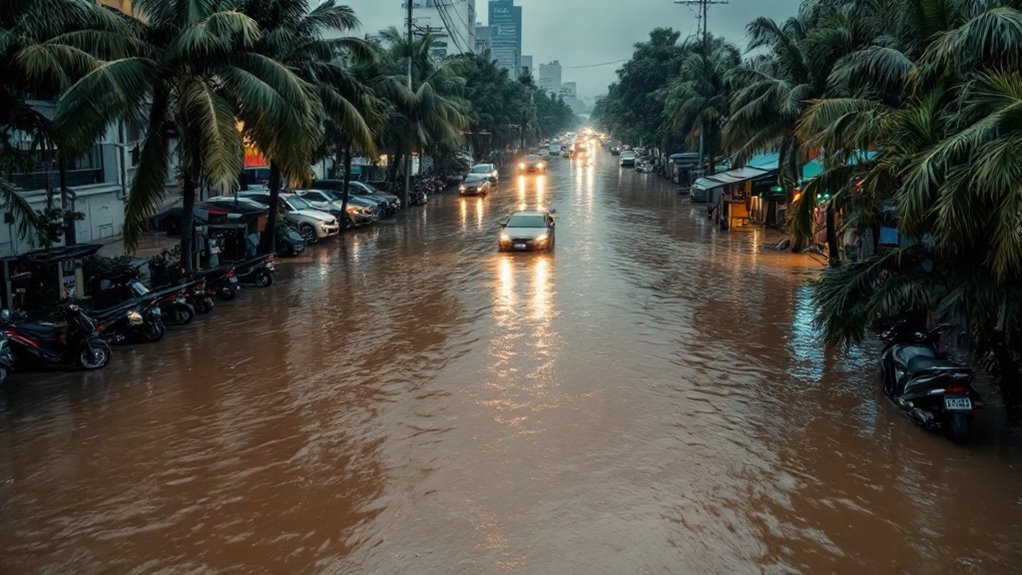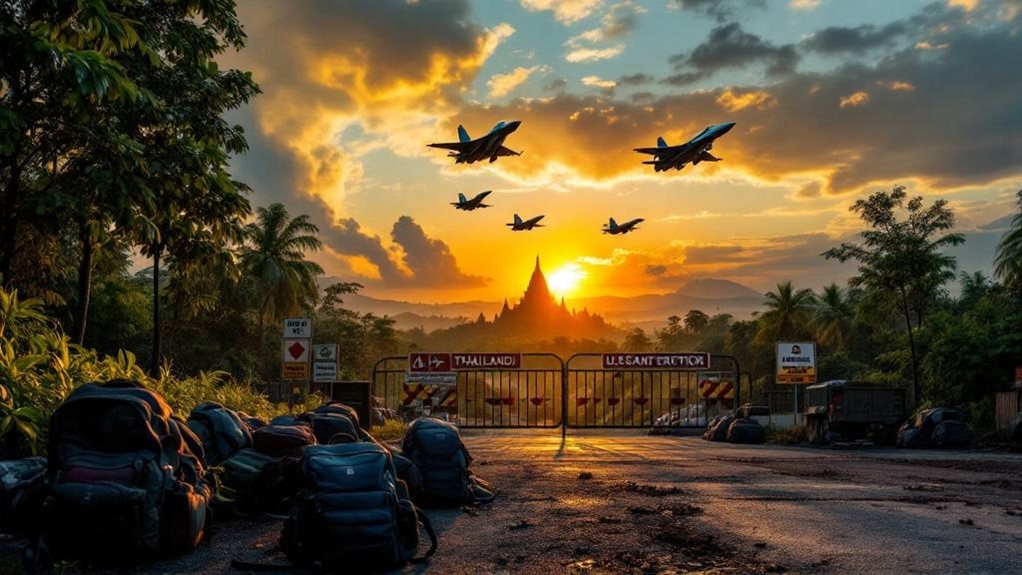Pattaya’s frequent street flooding occurs because intense rainfall regularly overwhelms the city’s inadequate drainage systems, especially in low-lying districts like Third Road and Talo railway road. These flood-prone areas quickly become impassable, causing traffic disruptions and vehicle submersions as water takes hours to recede. Recurring issues persist due to rapid urban expansion, insufficient infrastructure upgrades, and short-term responses rather than preventive measures. Greater insight into the challenges and consequences reveals the complexity behind the city’s persistent flooding.
Torrential rainfall in Pattaya routinely transforms city streets into fast-moving streams, as prolonged downpours overwhelm local drainage infrastructure. Intense rainfall events, especially those lasting longer than three hours, create sudden flooding that city systems cannot absorb quickly enough. These events are most common during May, when pre-monsoon weather patterns bring heavy, sustained downpours. The Thai Meteorological Department frequently issues weather warnings highlighting the risk of flash floods in Pattaya and other parts of Thailand, with particular attention to the eastern coast during intraseasonal monsoon surges.
Low-lying urban areas such as Third Road and the Talo railway road are especially vulnerable, as their limited natural drainage and urban runoff absorption capacity lead to rapid water pooling. The infrastructure in these neighborhoods is frequently tested beyond its limits, resulting in repeated vehicle submersions and significant transportation disruptions.
Low-lying neighborhoods like Third Road and Talo railway road face swift flooding and repeated transport chaos as drainage systems struggle to cope.
Motorbikes, small cars, and even some larger vehicles become immobilized as water depths rise, causing traffic gridlock and blocking major travel routes. Emergency responders often warn the public against attempting to drive through these flooded zones for safety reasons. Once the rainfall stops, it usually takes between one and two hours for floodwaters to recede enough for normal traffic flow to resume.
Despite recurring incidents, effective flood control interventions remain limited. The rapid onset of flash floods, combined with the insufficient capacity of existing drainage systems, leaves little time for immediate action during heavy rain events. Upgrading flood control infrastructure is a complex, long-term process, further complicated by the pressures of urban growth and tourism development. [The lack of a coordinated international platform for disaster information exchange, such as the one provided by the Global Disaster Alert and Coordination System (GDACS), means local authorities often operate without real-time updates or global situational awareness.]
As a result, authorities focus primarily on issuing weather warnings and managing emergency responses rather than implementing preventive measures during rainfall events.
Frequent flooding disrupts daily commutes, damages personal and commercial vehicles, and undermines Pattaya’s reputation as a tourist destination. Local residents express ongoing frustration with the lack of permanent solutions, while the overall economic and social costs continue to accumulate.
Persistent weather patterns and infrastructural weaknesses together guarantee that streets in Pattaya often turn into rivers, with no immediate remedy in sight.









